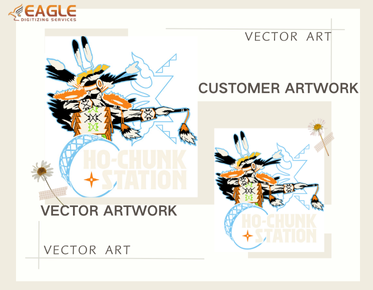The Fundamental Difference Between Vector and Raster Images – Explained Once and for All!
In the world of digital graphics, understanding the difference between vector and raster images is crucial for designers, artists, and anyone involved in visual media. Whether you're creating a logo, designing a website, or printing a large banner, knowing which type of image to use can significantly impact the quality and scalability of your work. In this comprehensive guide, we'll delve into the fundamental differences between vector and raster images, their unique characteristics, and how to choose the right format for your projects. To start, let's explore what makes vector images unique by visiting this resource.
Understanding Vector Images
Vector images are created using mathematical equations and geometric shapes such as points, lines, and curves. This means that vector graphics are resolution-independent, allowing them to be scaled up or down without losing quality. This characteristic makes vector images ideal for logos, icons, and any design that requires resizing. Common file formats for vector images include SVG, AI, and EPS.
Advantages of Vector Images
One of the primary advantages of vector images is their scalability. Because they are not made up of pixels, vector images can be resized to any dimension without becoming pixelated or blurry. This makes them perfect for designs that need to be used across various media, from small business cards to large billboards. Additionally, vector images often have smaller file sizes compared to raster images, making them easier to store and share.
Understanding Raster Images
Raster images, also known as bitmap images, are composed of a grid of individual pixels. Each pixel contains color information, and together they form the complete image. Raster images are resolution-dependent, meaning their quality is fixed based on their pixel dimensions. Common file formats for raster images include JPEG, PNG, and GIF.
Advantages of Raster Images
Raster images are excellent for detailed and complex images, such as photographs. They can capture a wide range of colors and subtle gradients, making them ideal for realistic images. Raster images are also widely supported across various platforms and software, making them versatile for different applications.
Key Differences Between Vector and Raster Images
The primary difference between vector and raster images lies in their composition. Vector images are made of paths defined by mathematical equations, while raster images are made of pixels. This difference affects their scalability, file size, and application. Vector images are best for designs that require frequent resizing, while raster images are better suited for detailed and complex visuals.
Choosing the Right Format for Your Project
When deciding between vector and raster images, consider the purpose of your project. If you need a design that will be used in various sizes, such as a logo, a vector image is the best choice. For projects that require detailed imagery, such as photographs, a raster image is more appropriate. Additionally, consider the software and platforms you will be using, as some may have limitations on the types of images they support.
Applications and Use Cases
Vector images are commonly used in graphic design, branding, and any application where scalability is essential. They are ideal for creating logos, icons, and illustrations. Raster images, on the other hand, are used in photography, digital art, and any application that requires detailed and complex visuals. Understanding the strengths and limitations of each type of image will help you make informed decisions in your design projects.
Future Trends in Digital Imaging
As technology continues to evolve, the line between vector and raster images is becoming increasingly blurred. New software and tools are being developed to combine the strengths of both formats, offering designers more flexibility and creative possibilities. Additionally, advancements in display technology are pushing the boundaries of image quality, making it more important than ever to choose the right format for your projects.
In conclusion, understanding the fundamental differences between vector and raster images is essential for anyone involved in digital design. By choosing the right format for your project, you can ensure the best quality and scalability for your work. For those looking to transform their creative visions into scalable designs, Eagle Digitizing excels in delivering professional vector art services.


